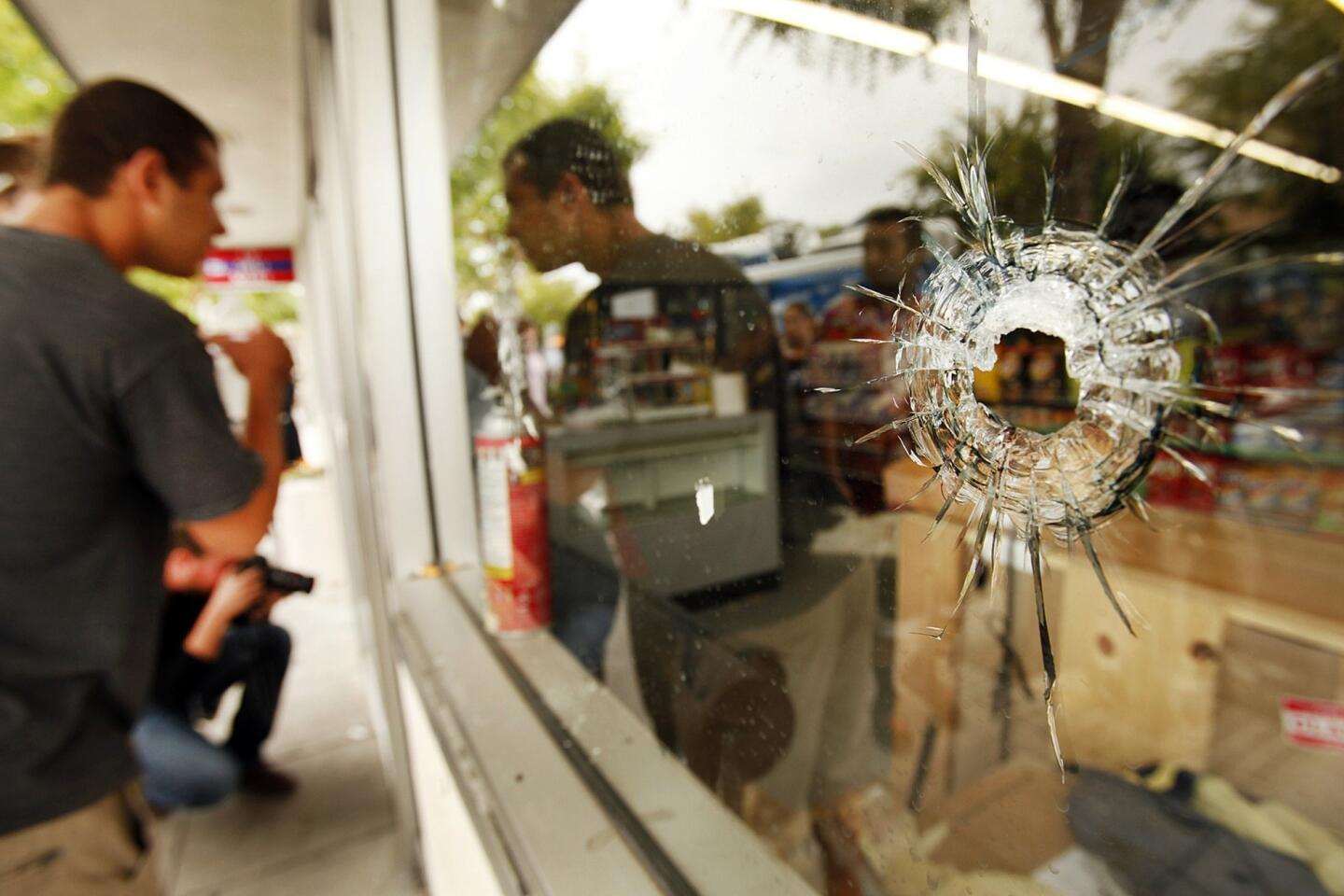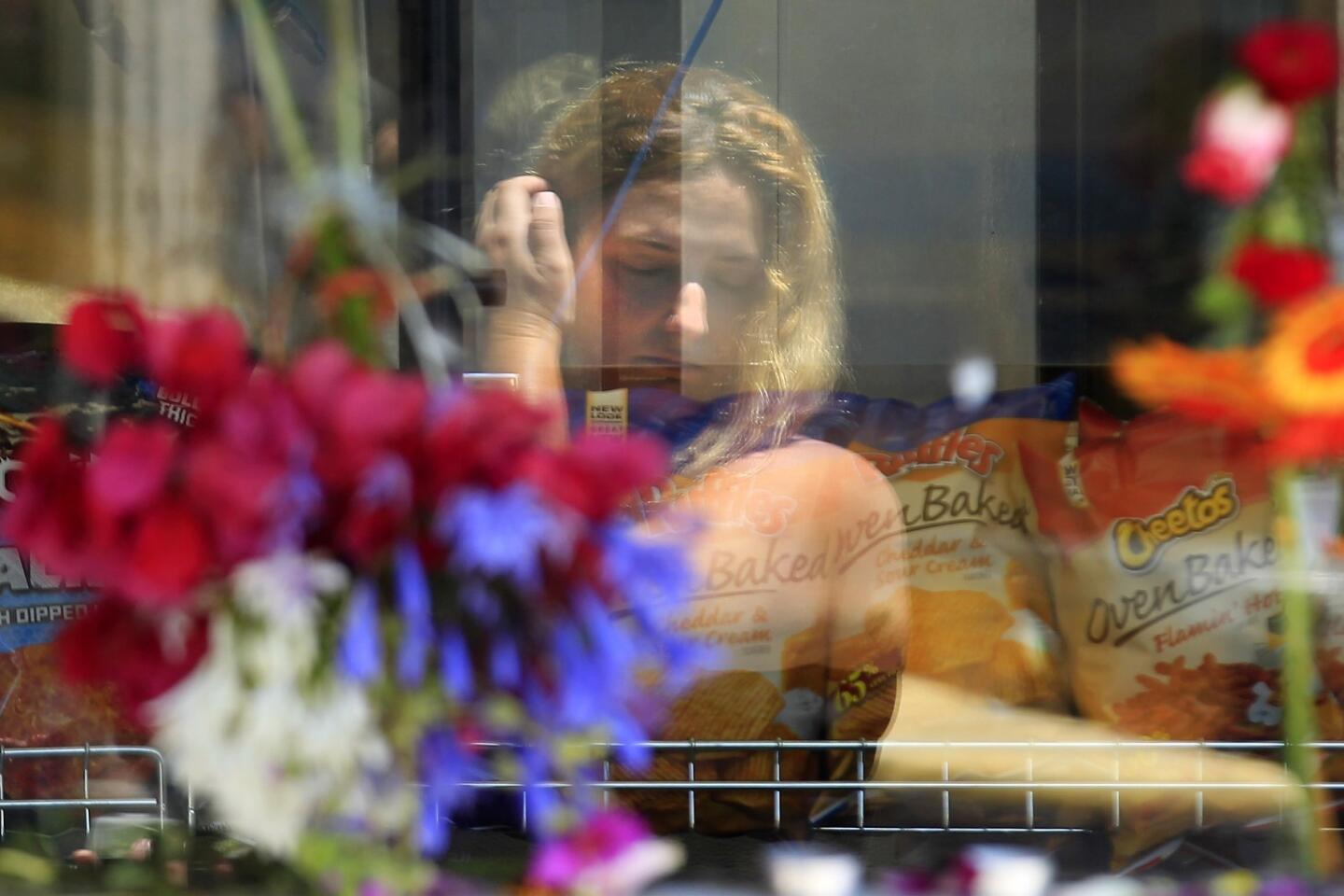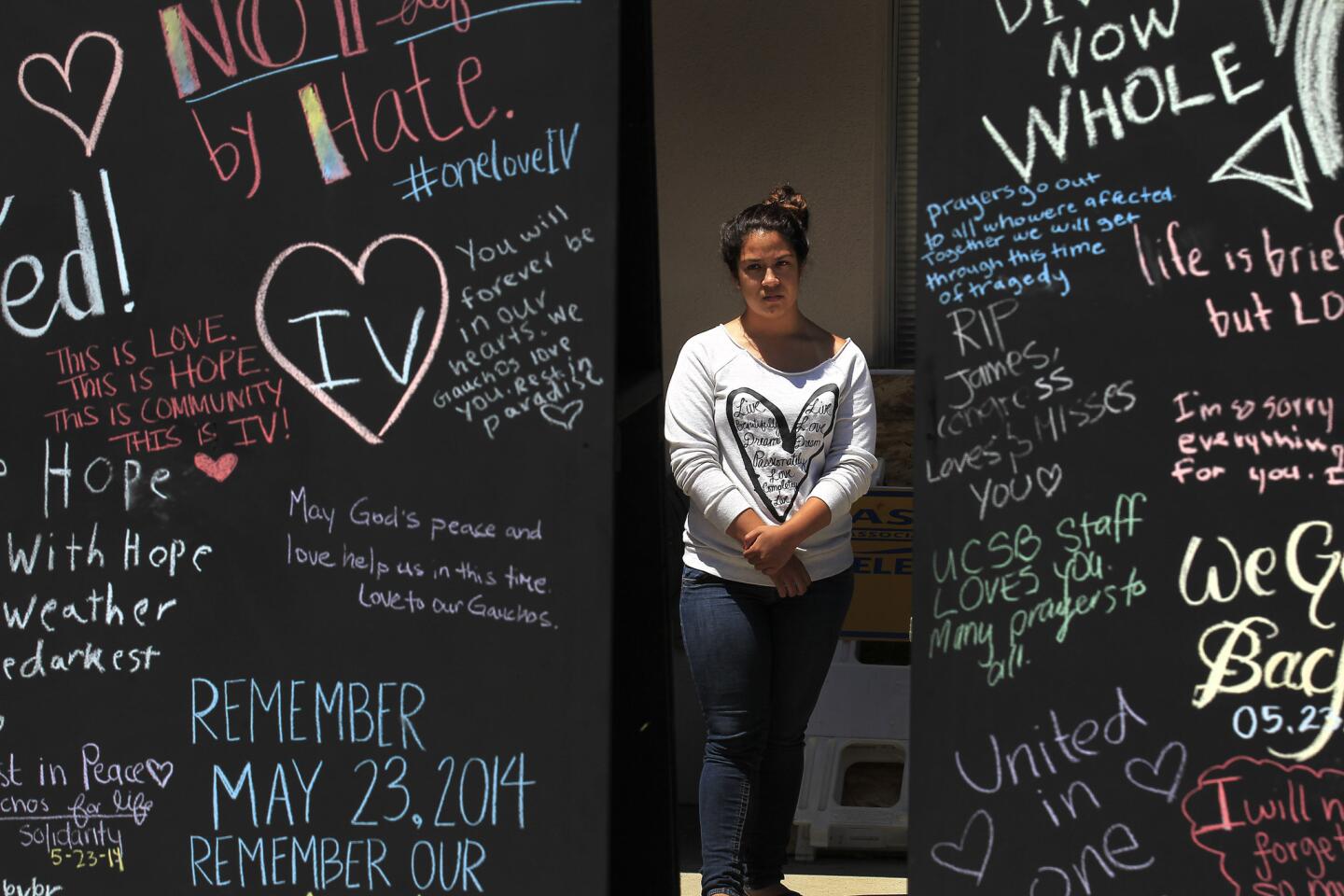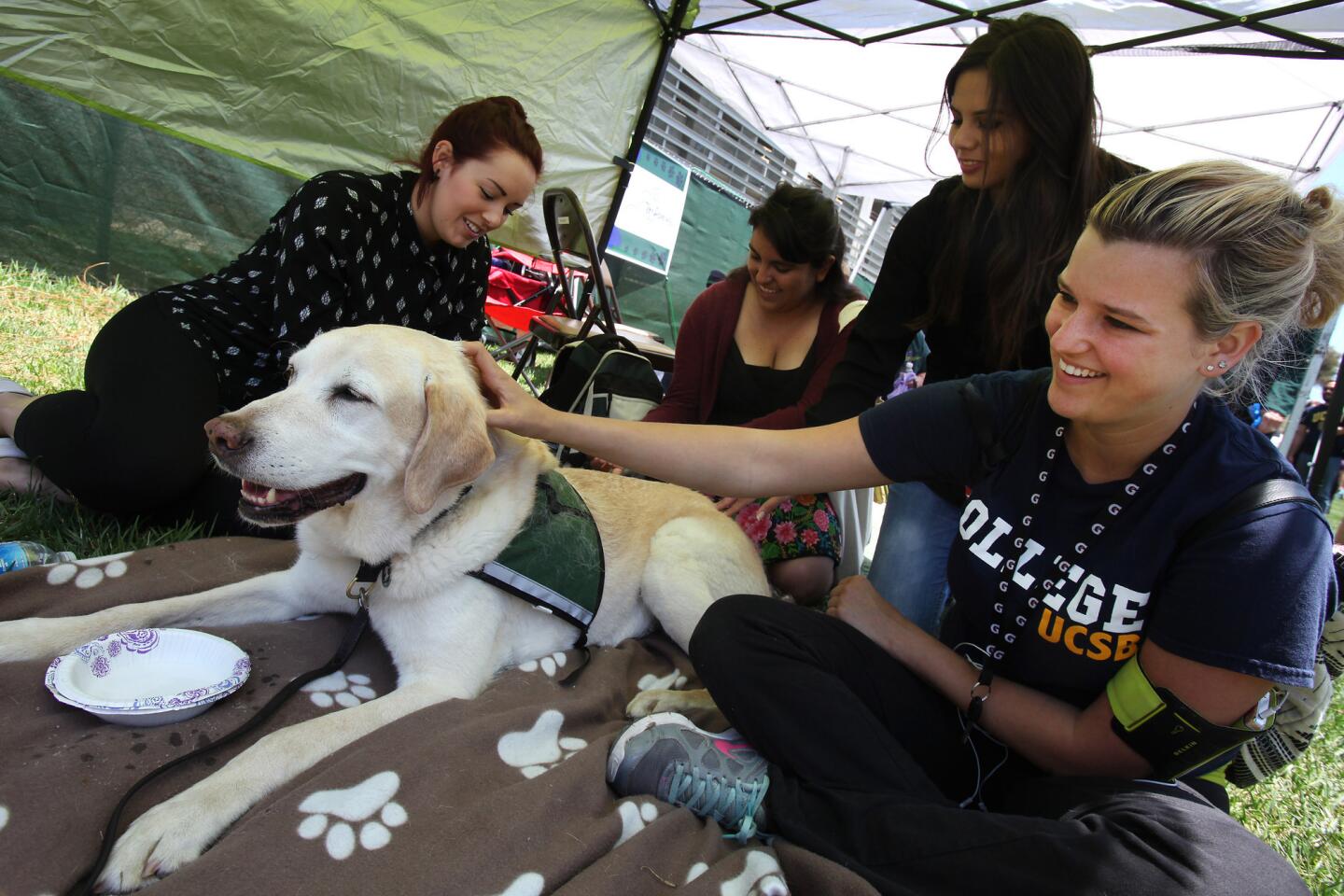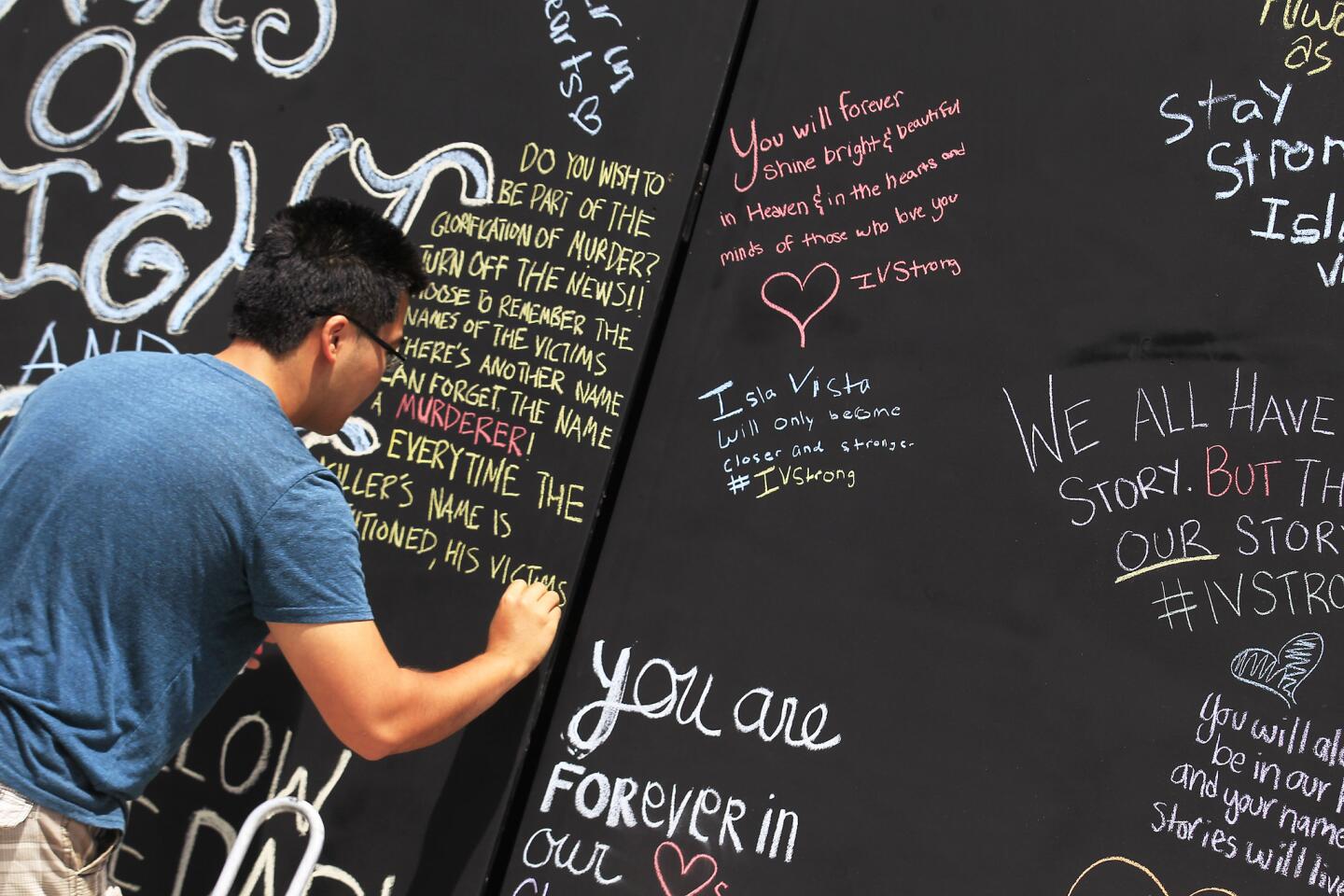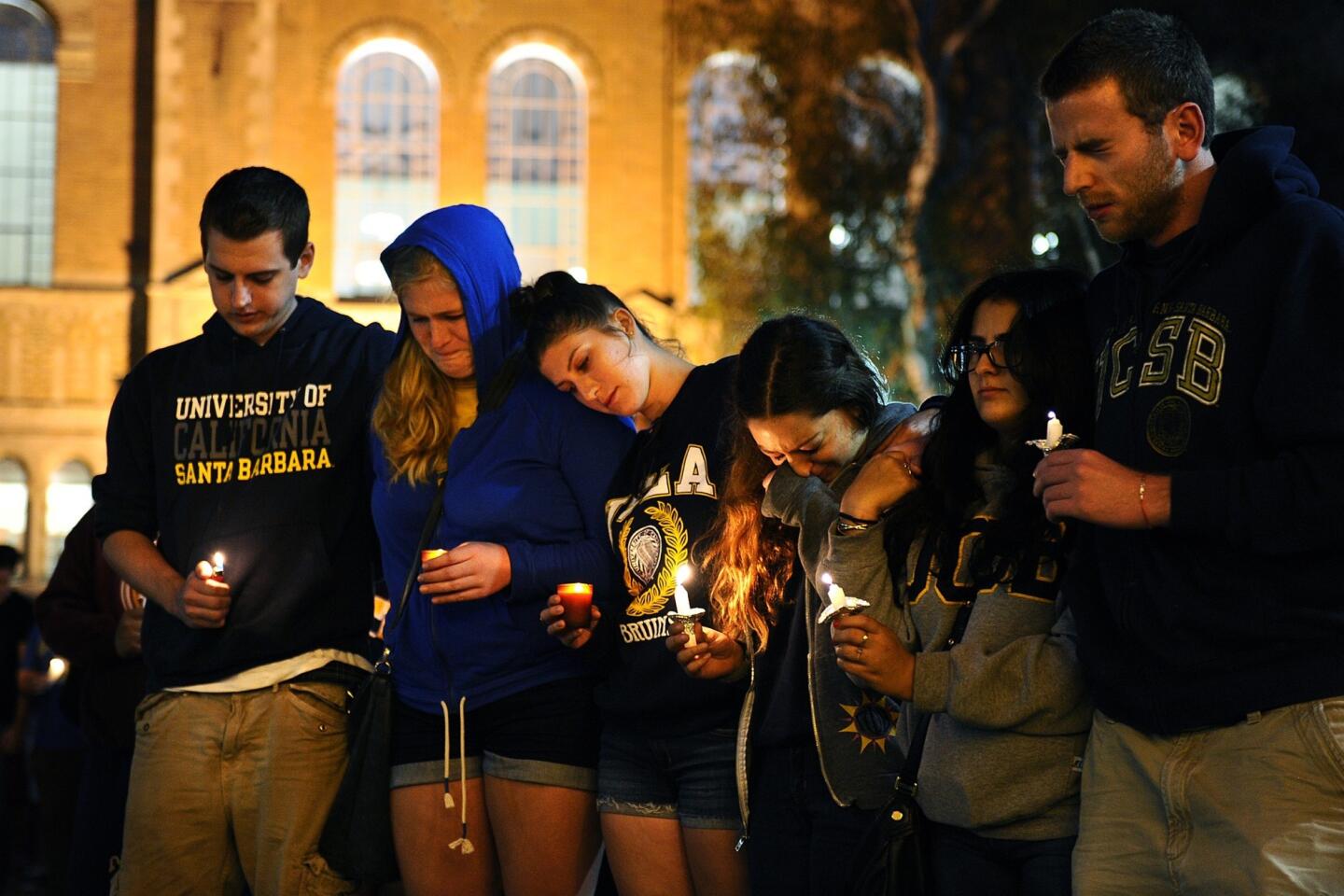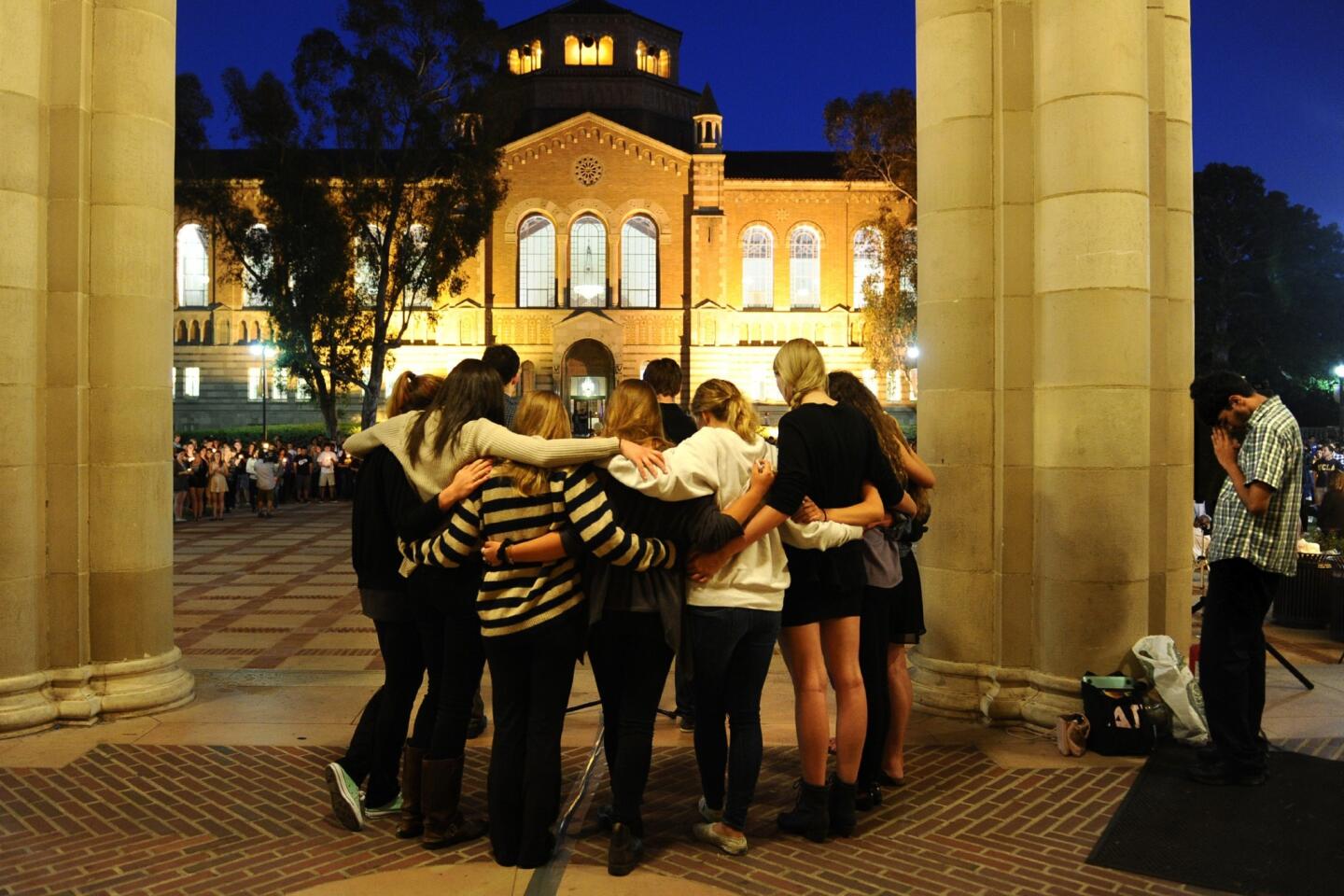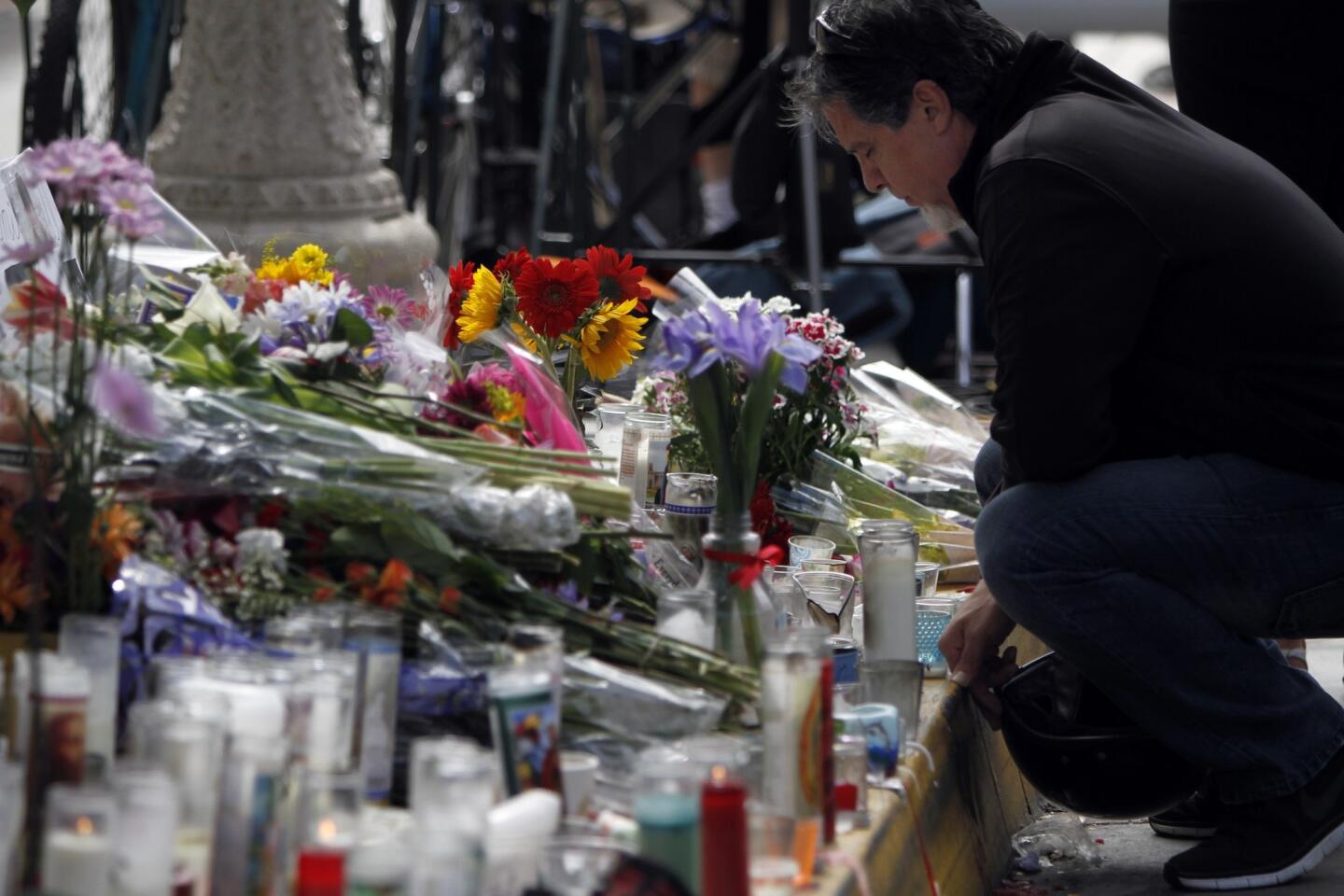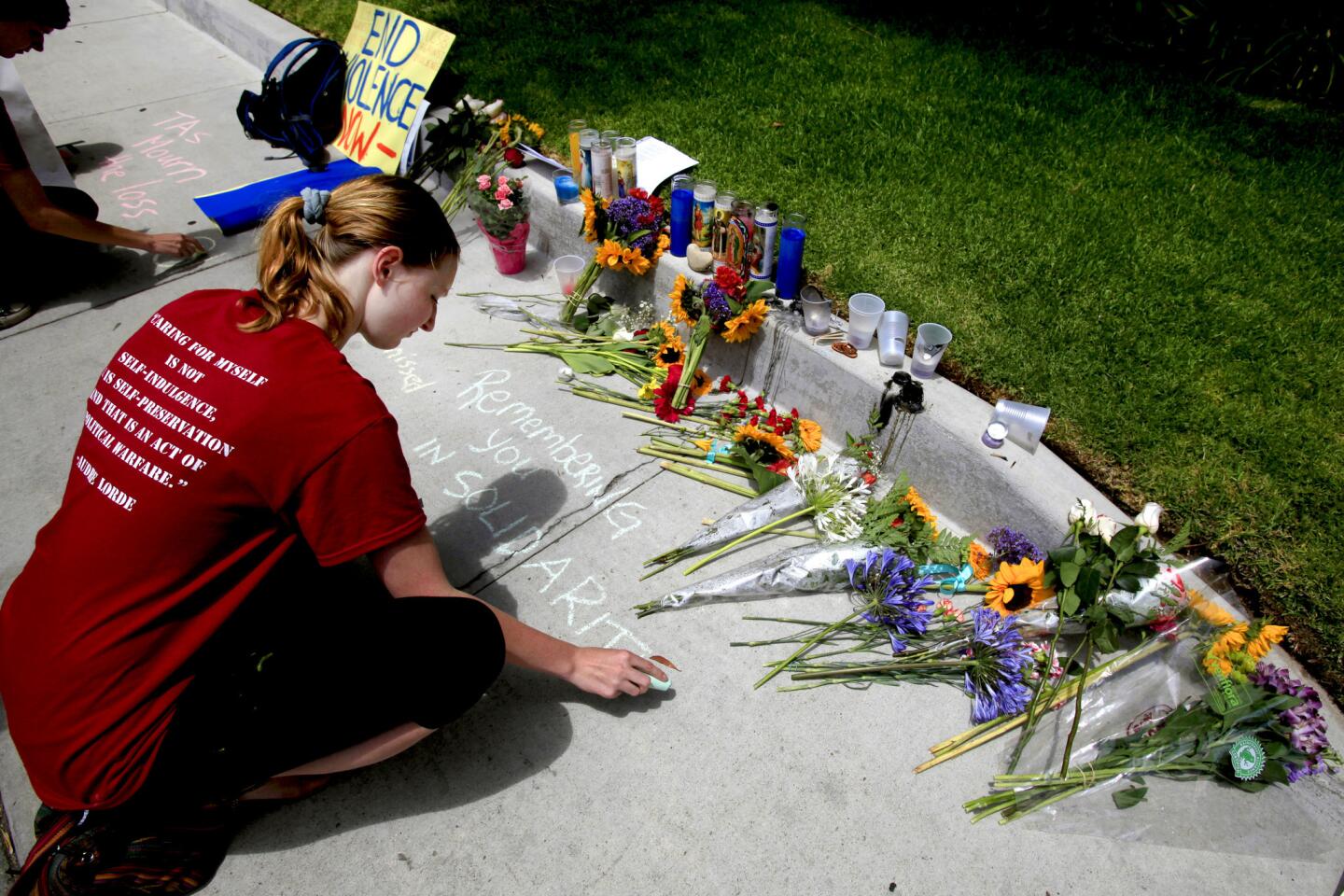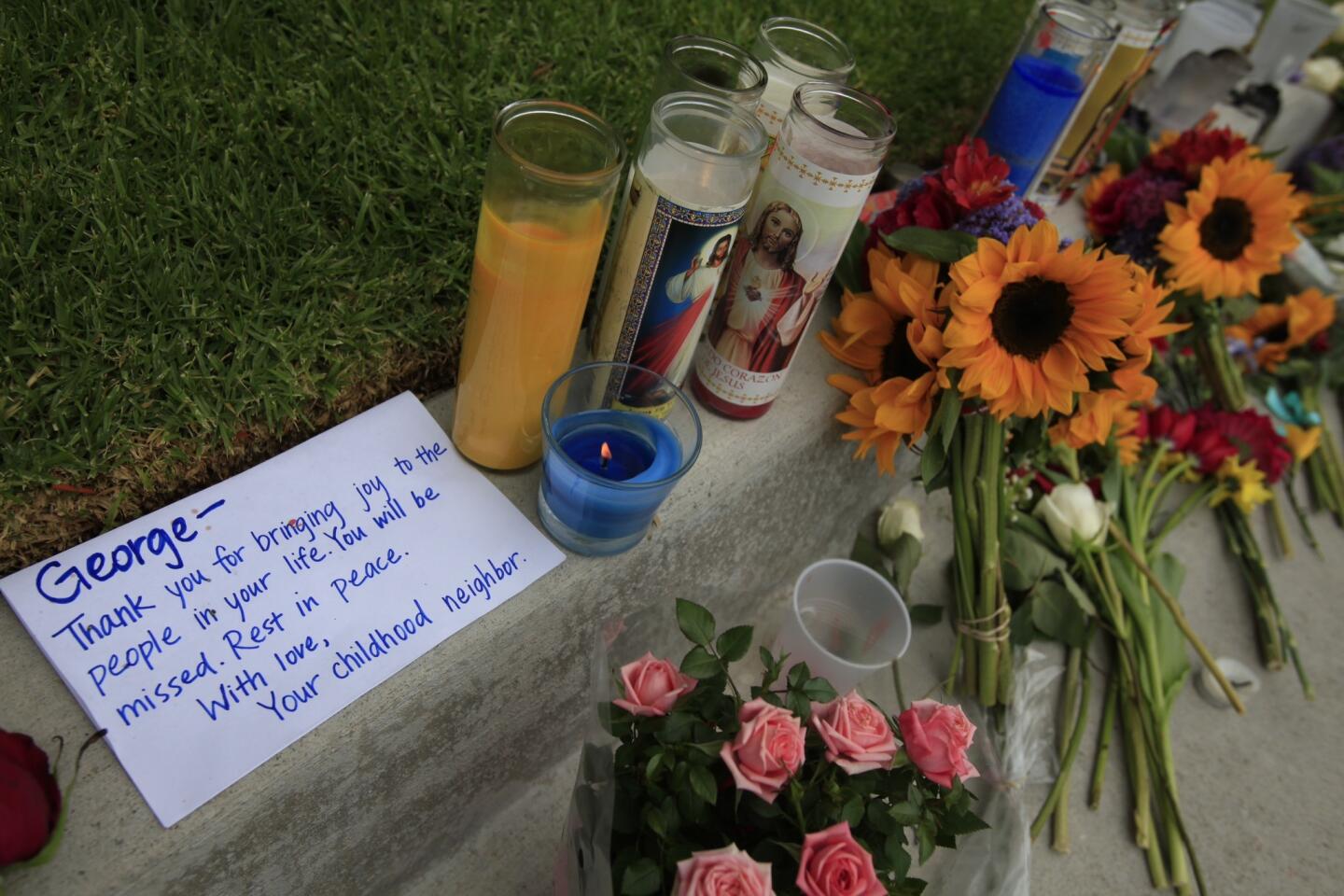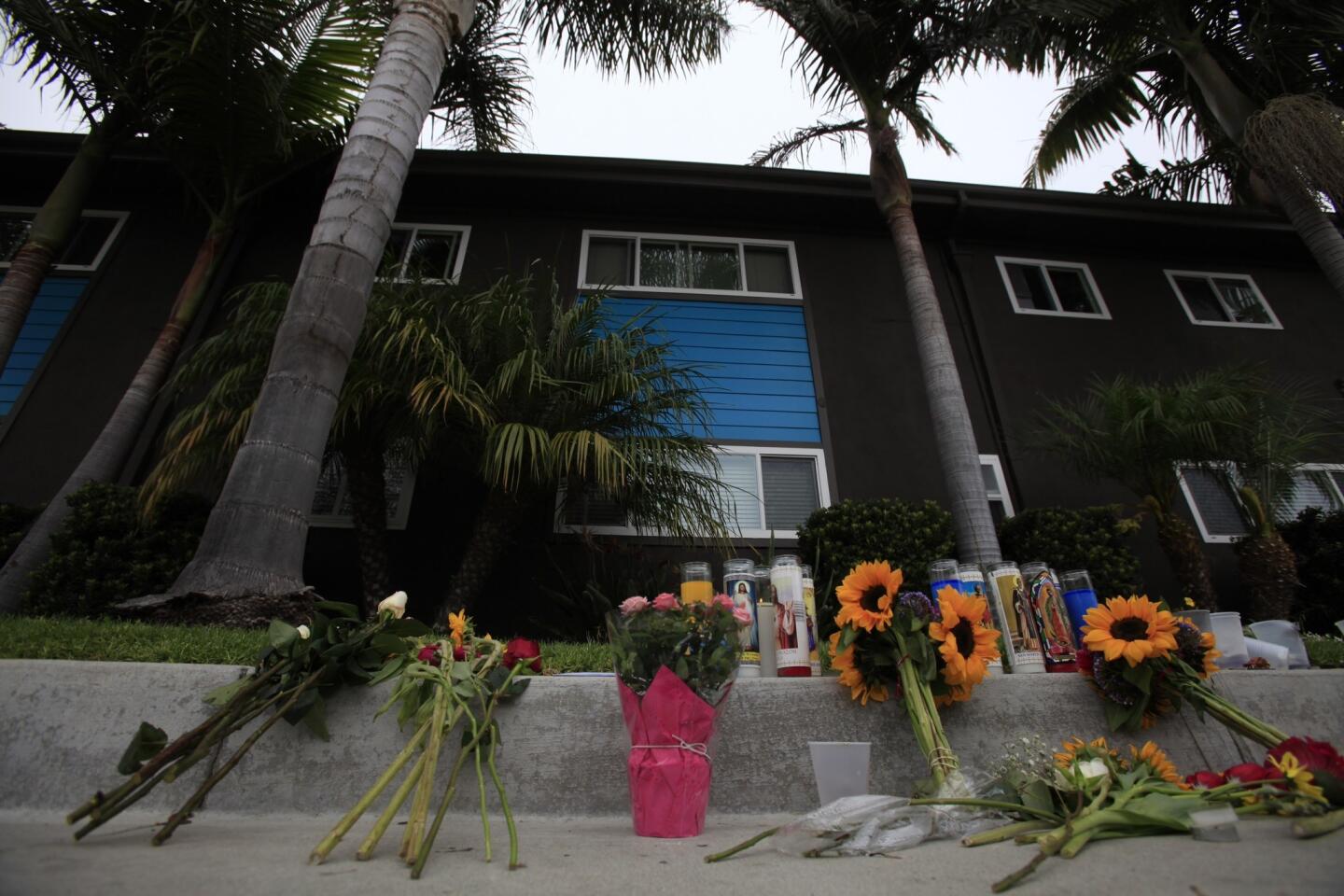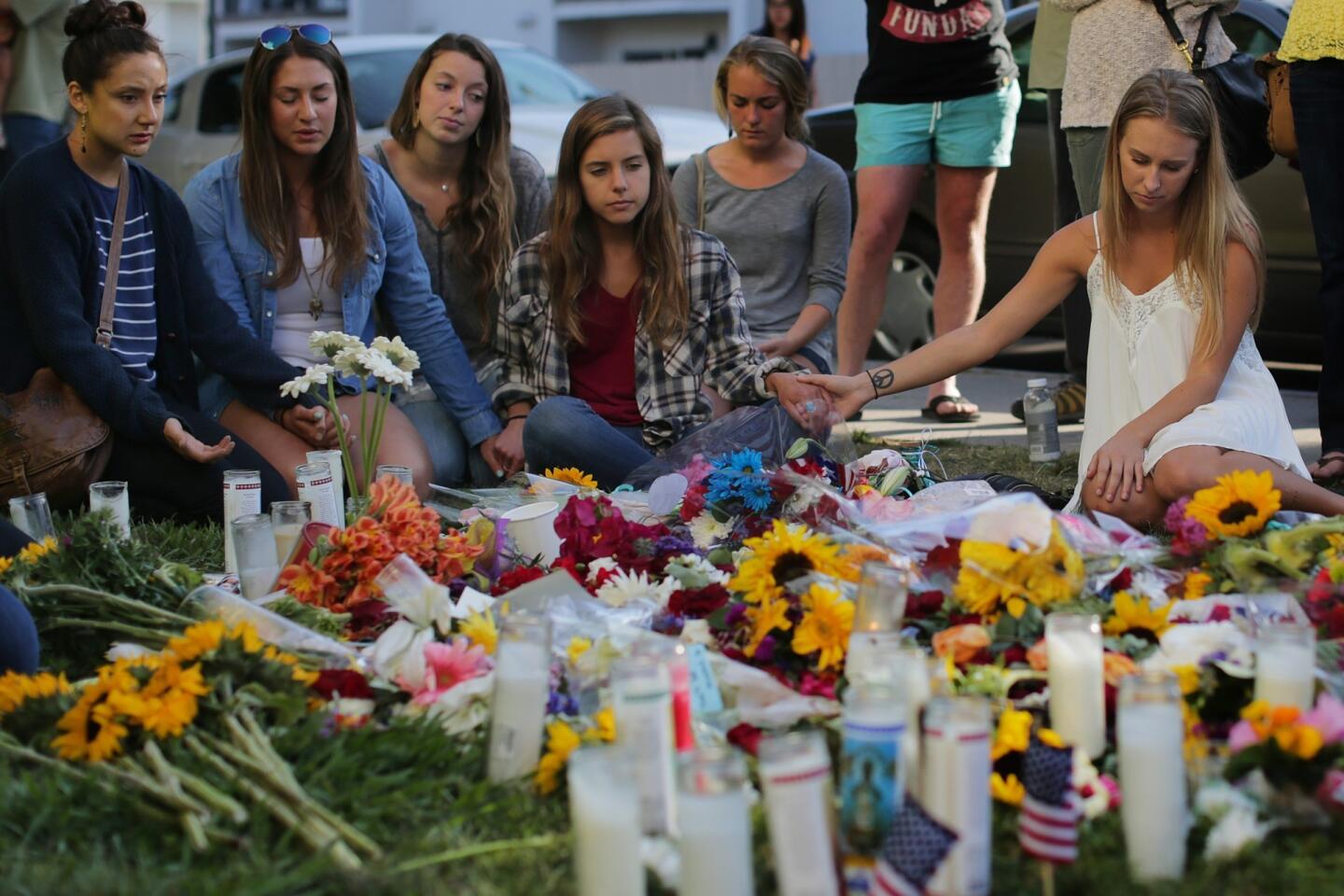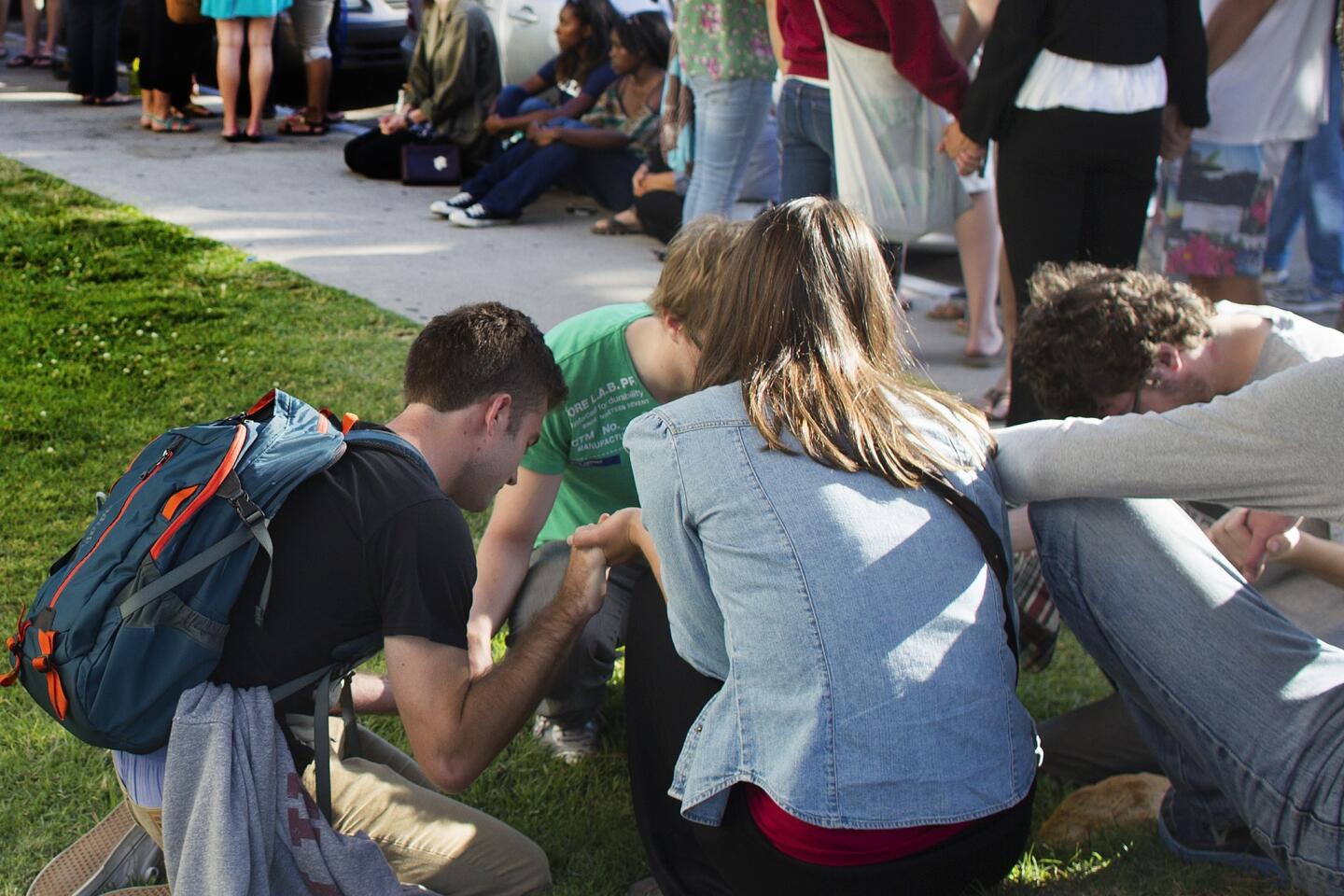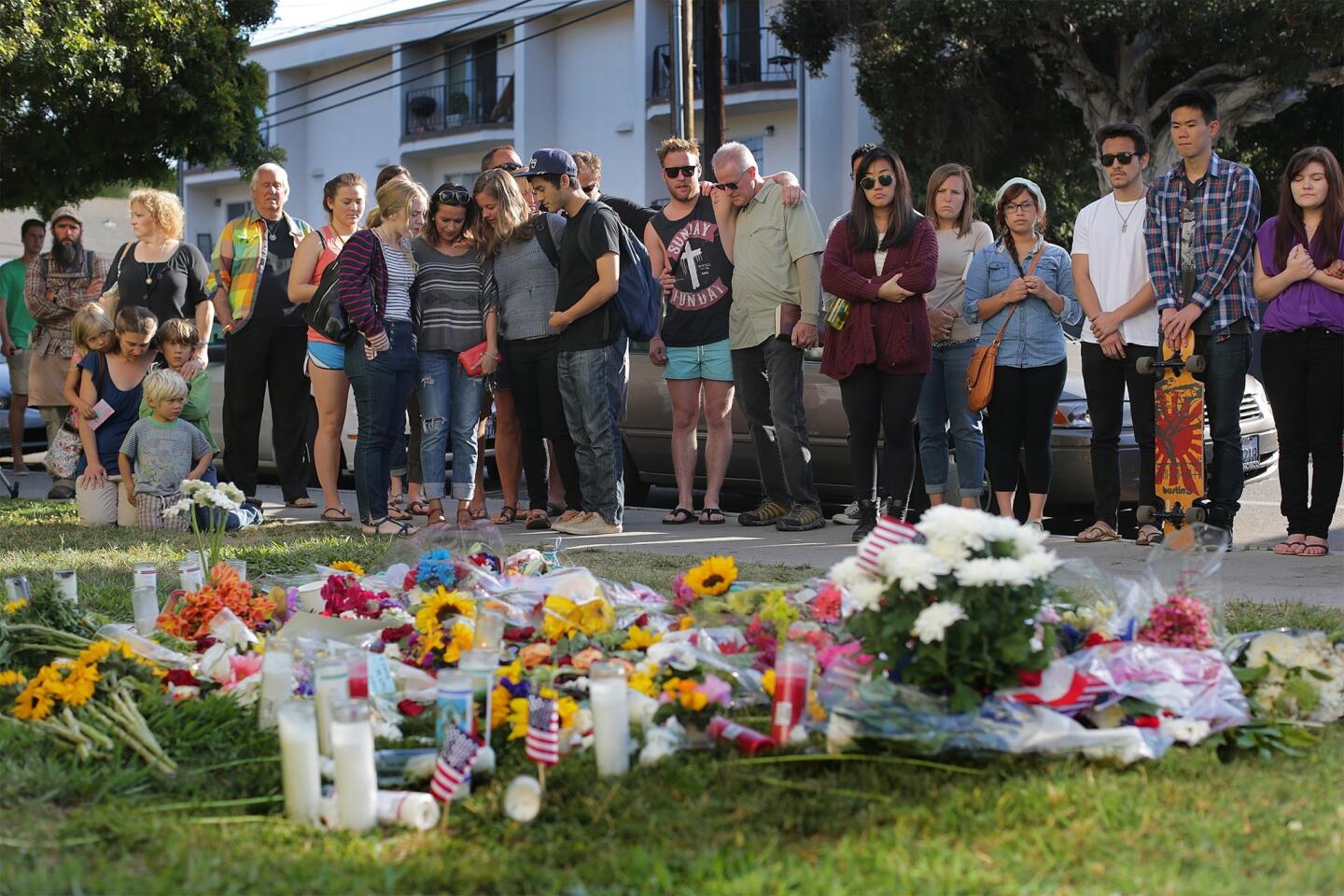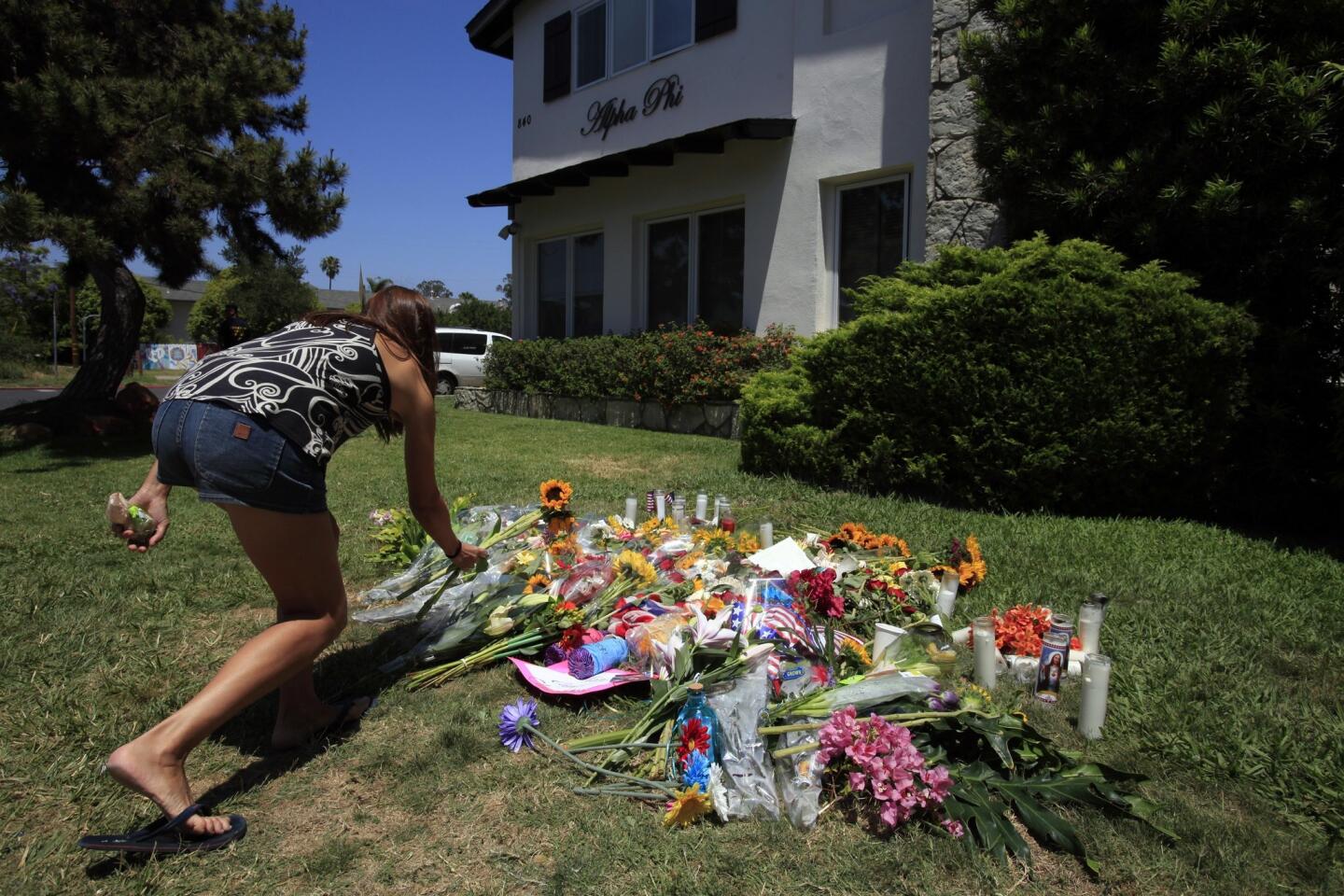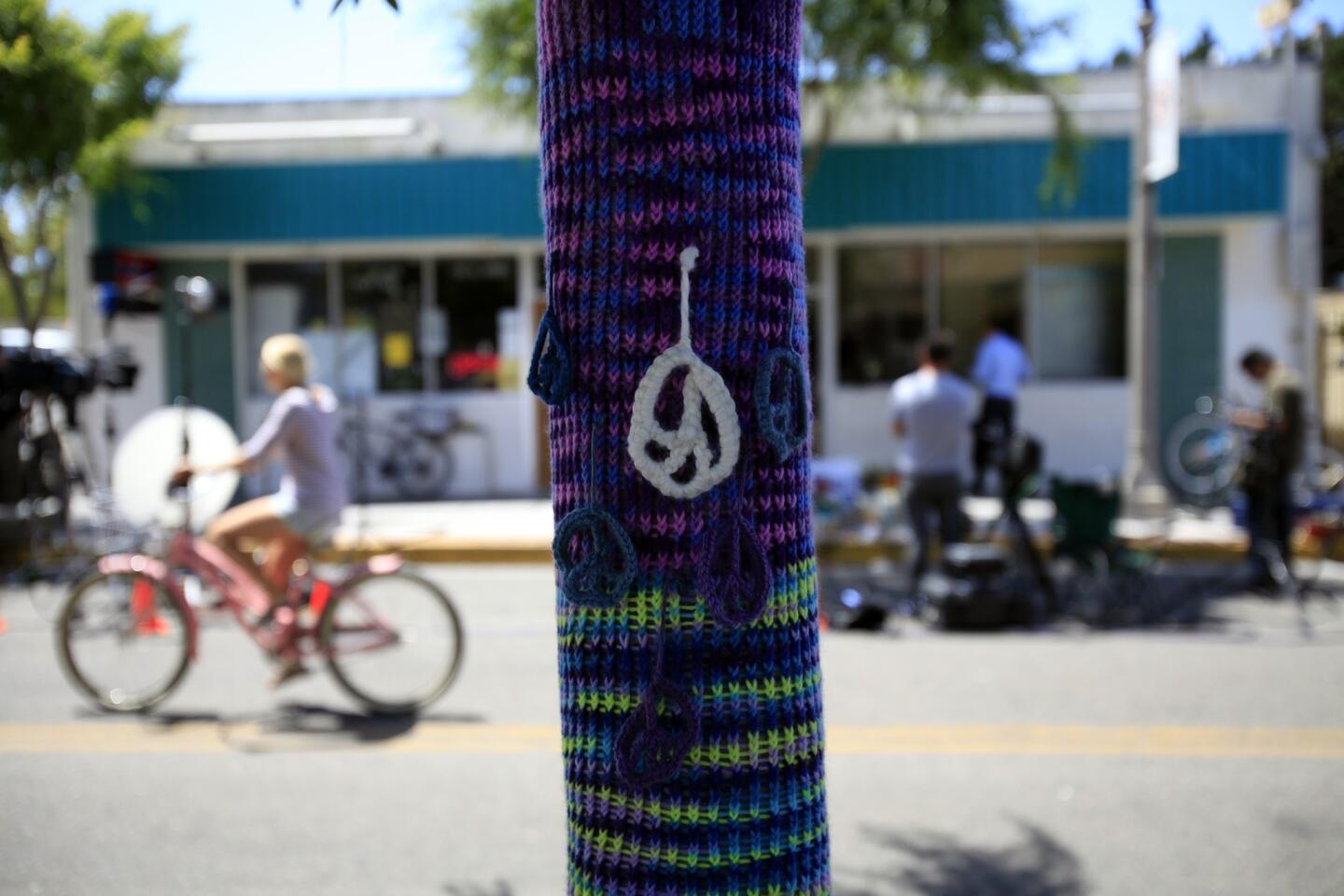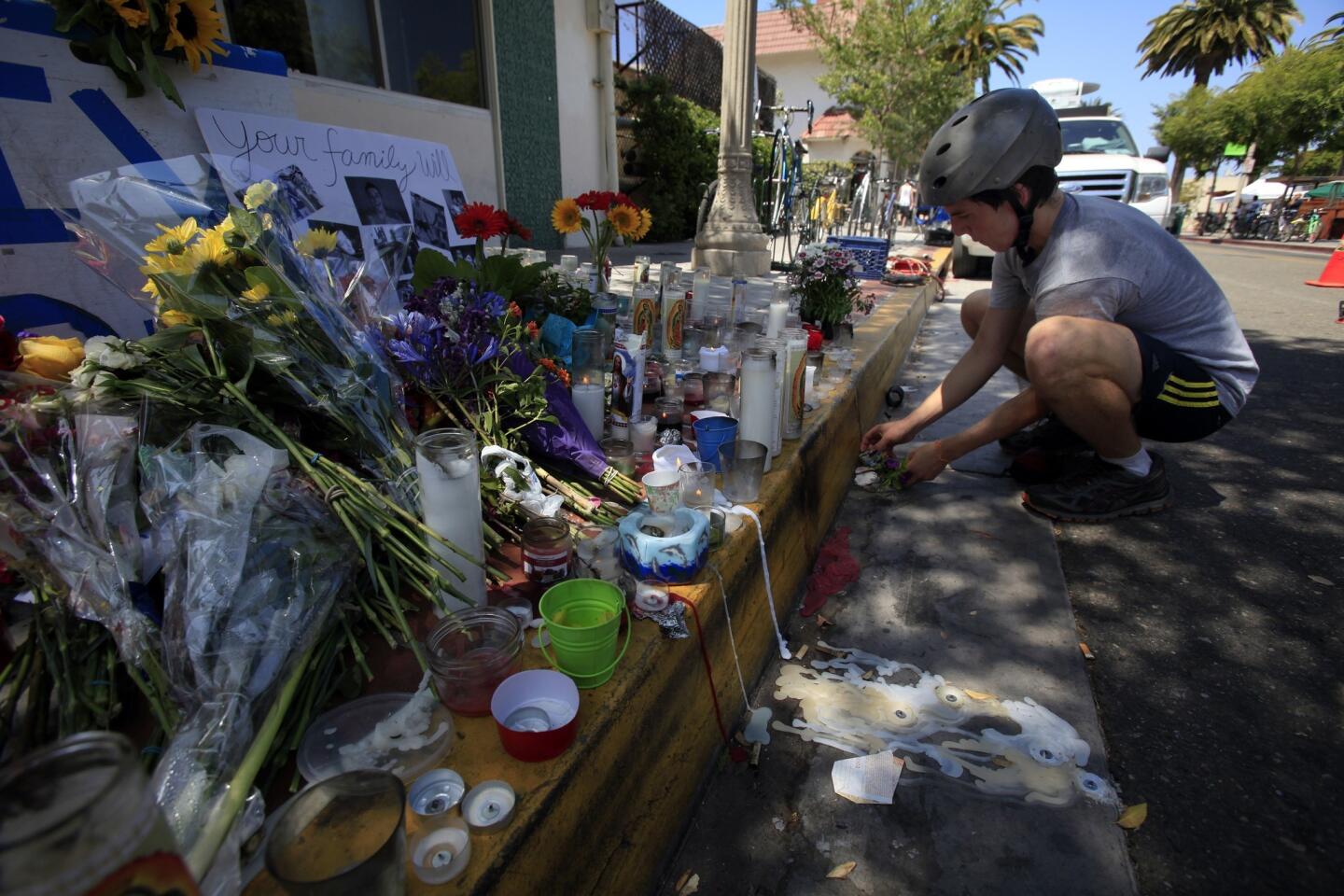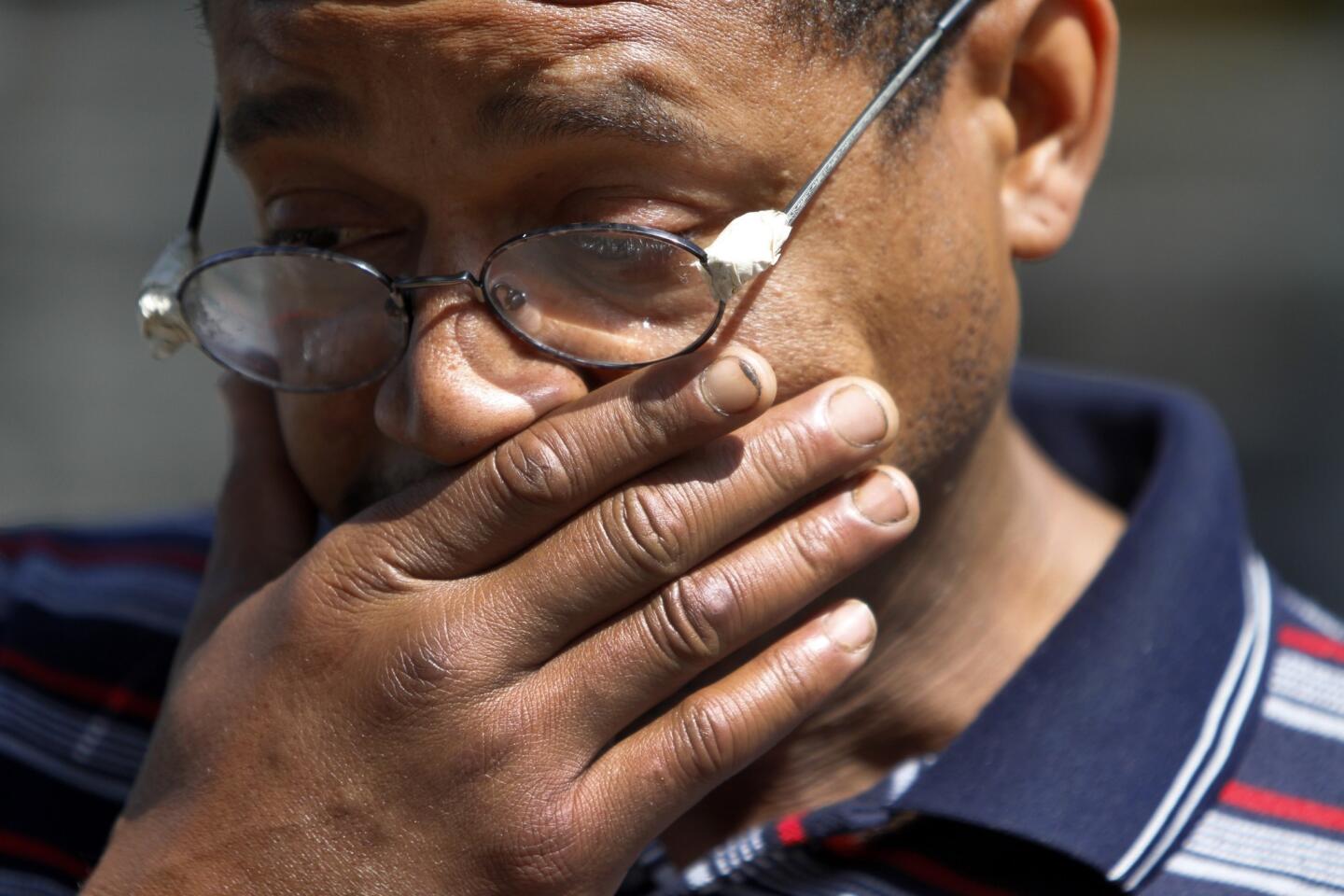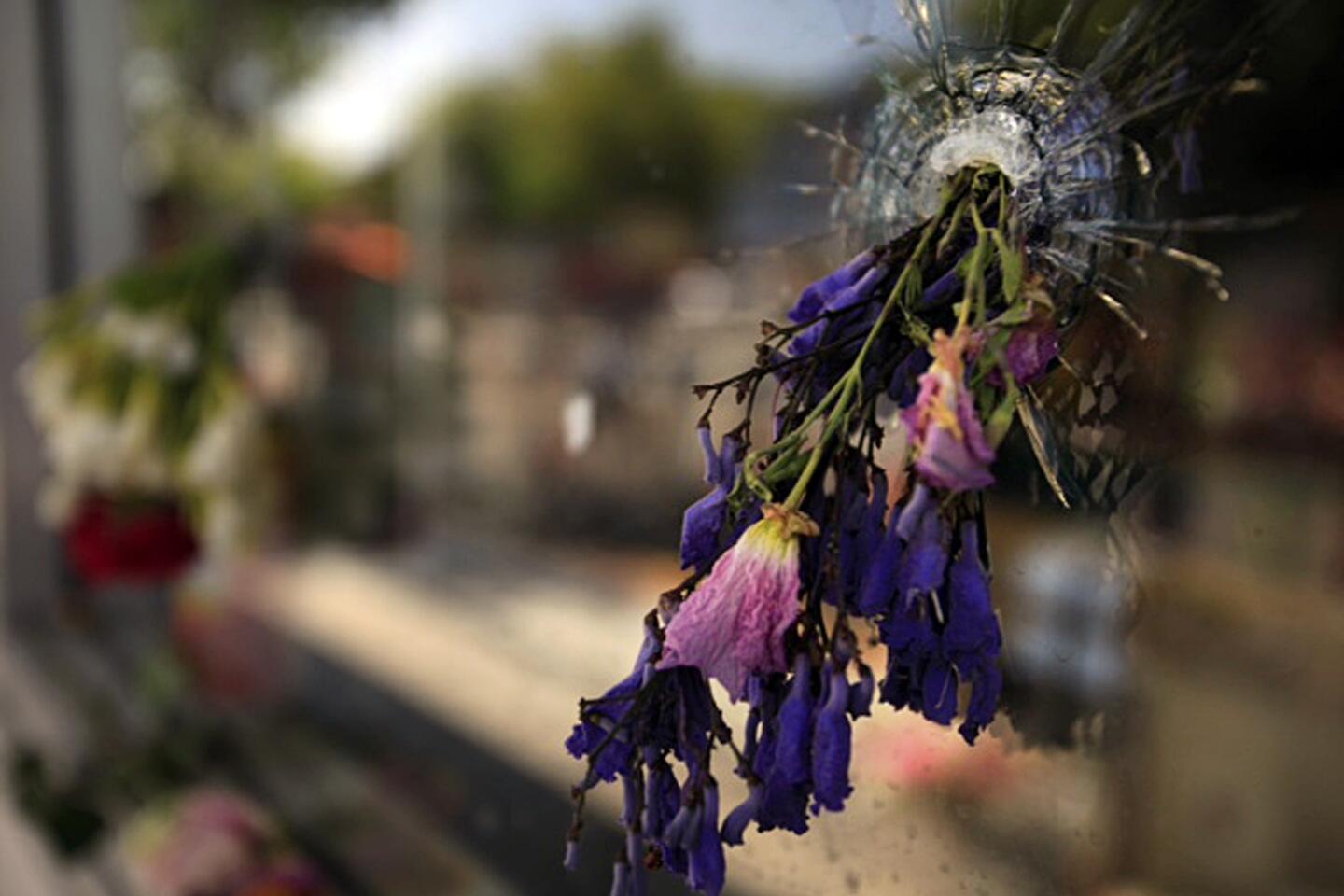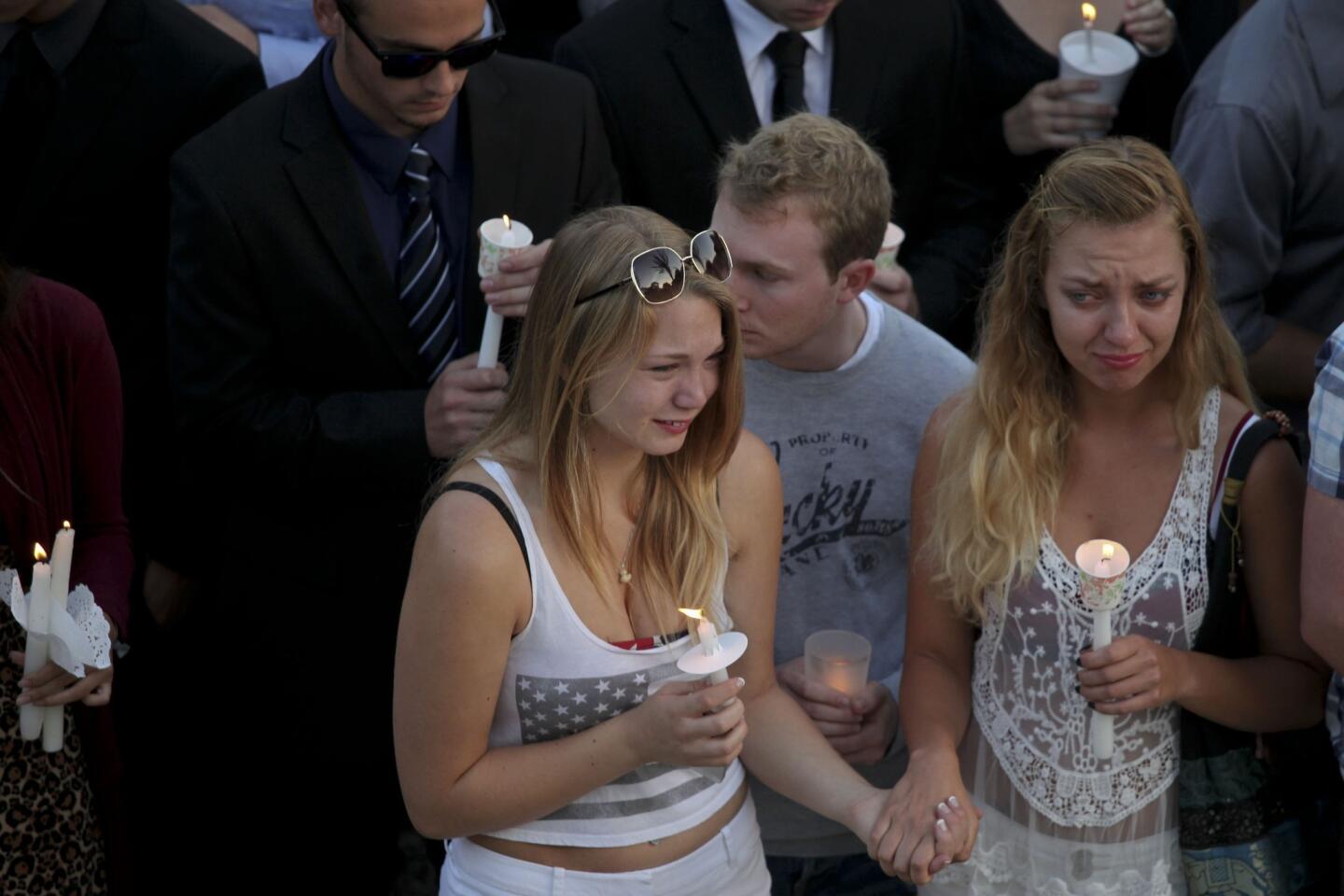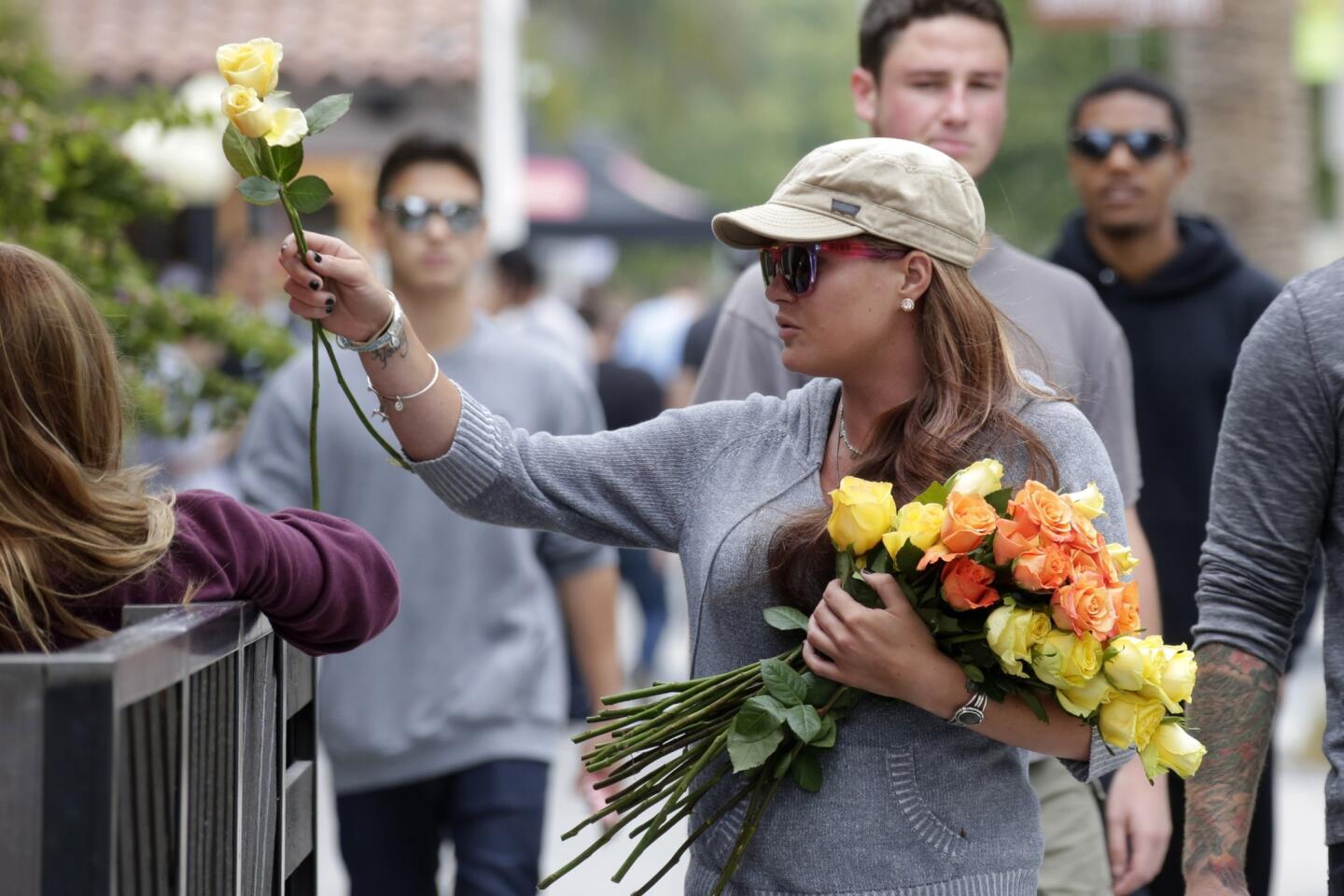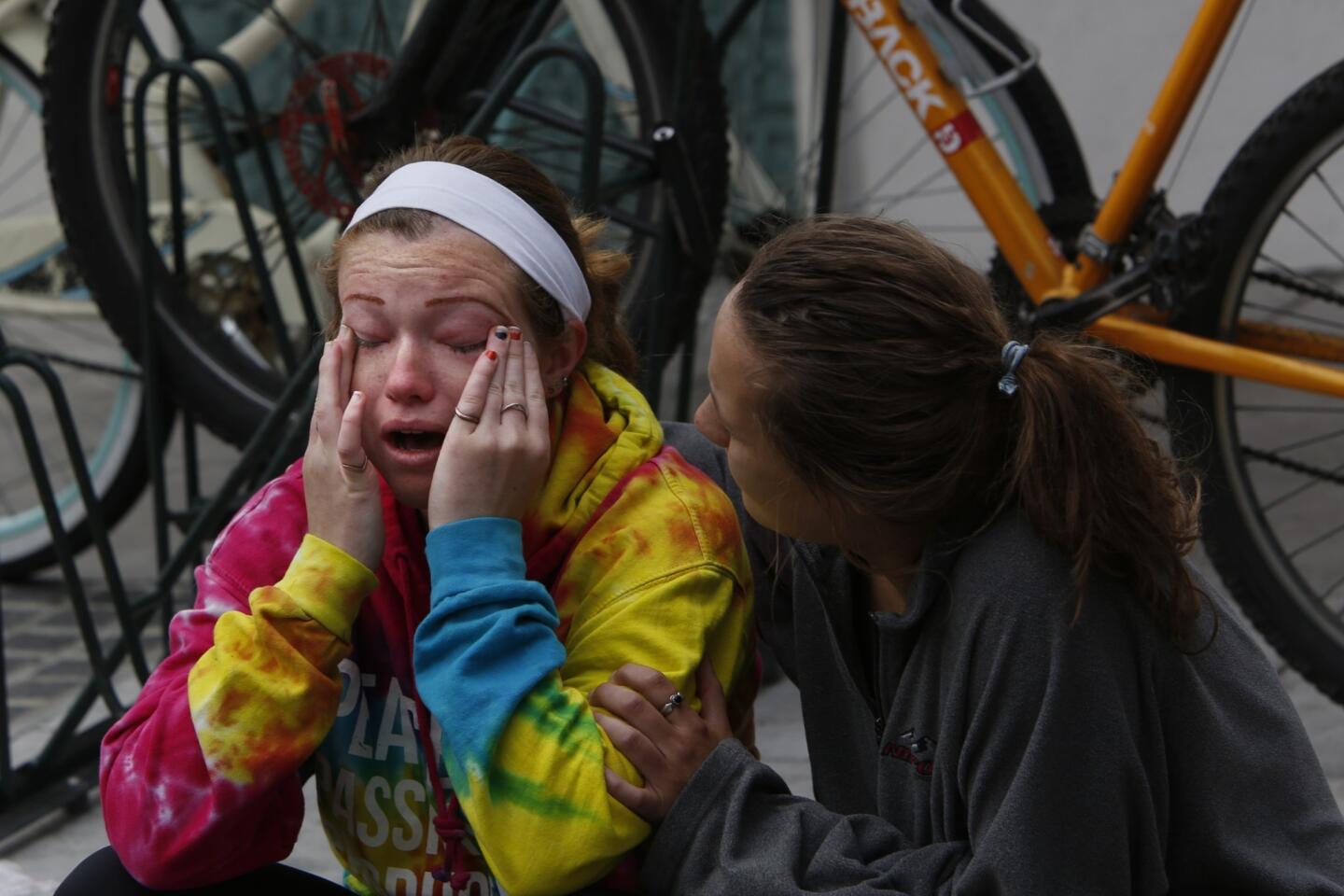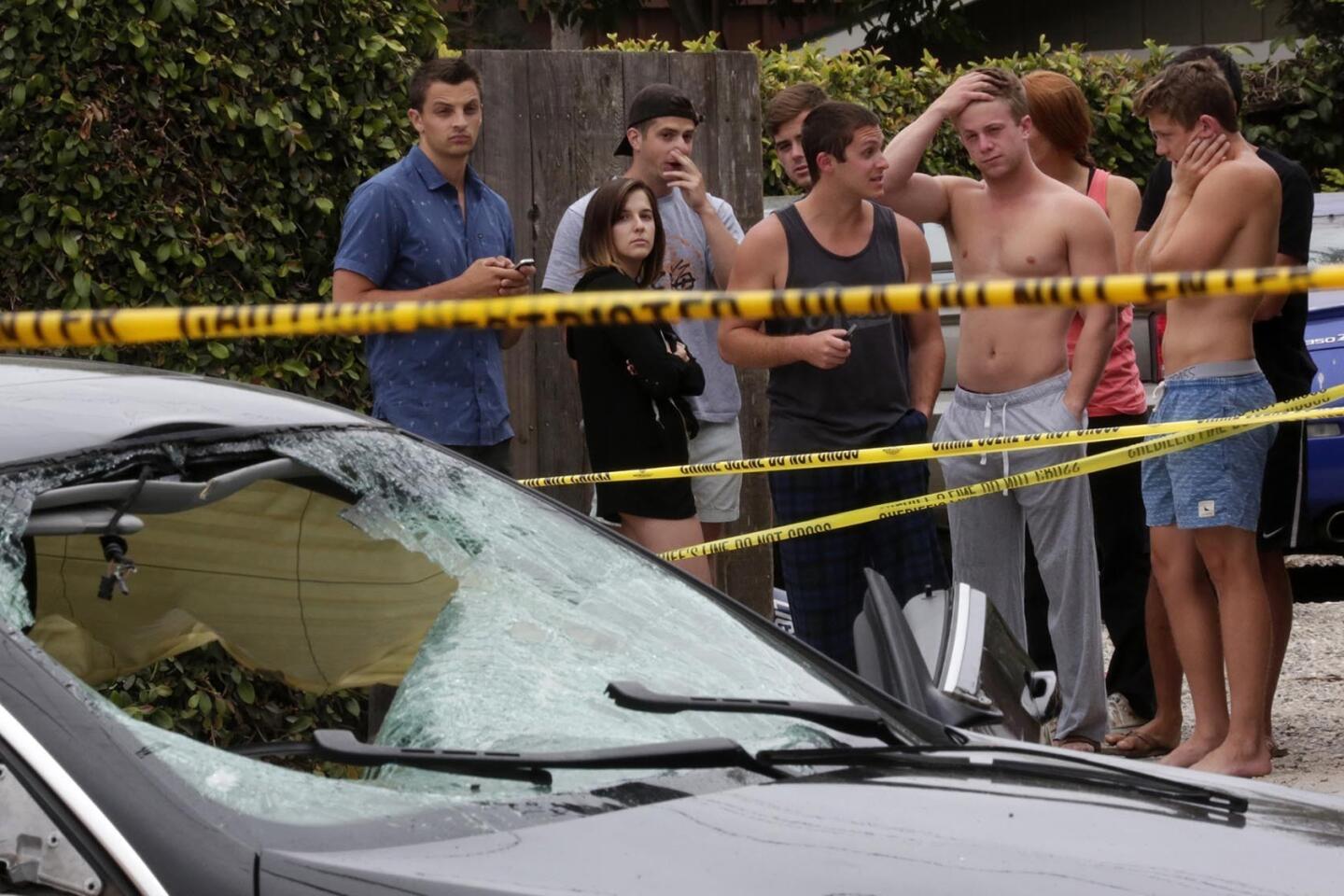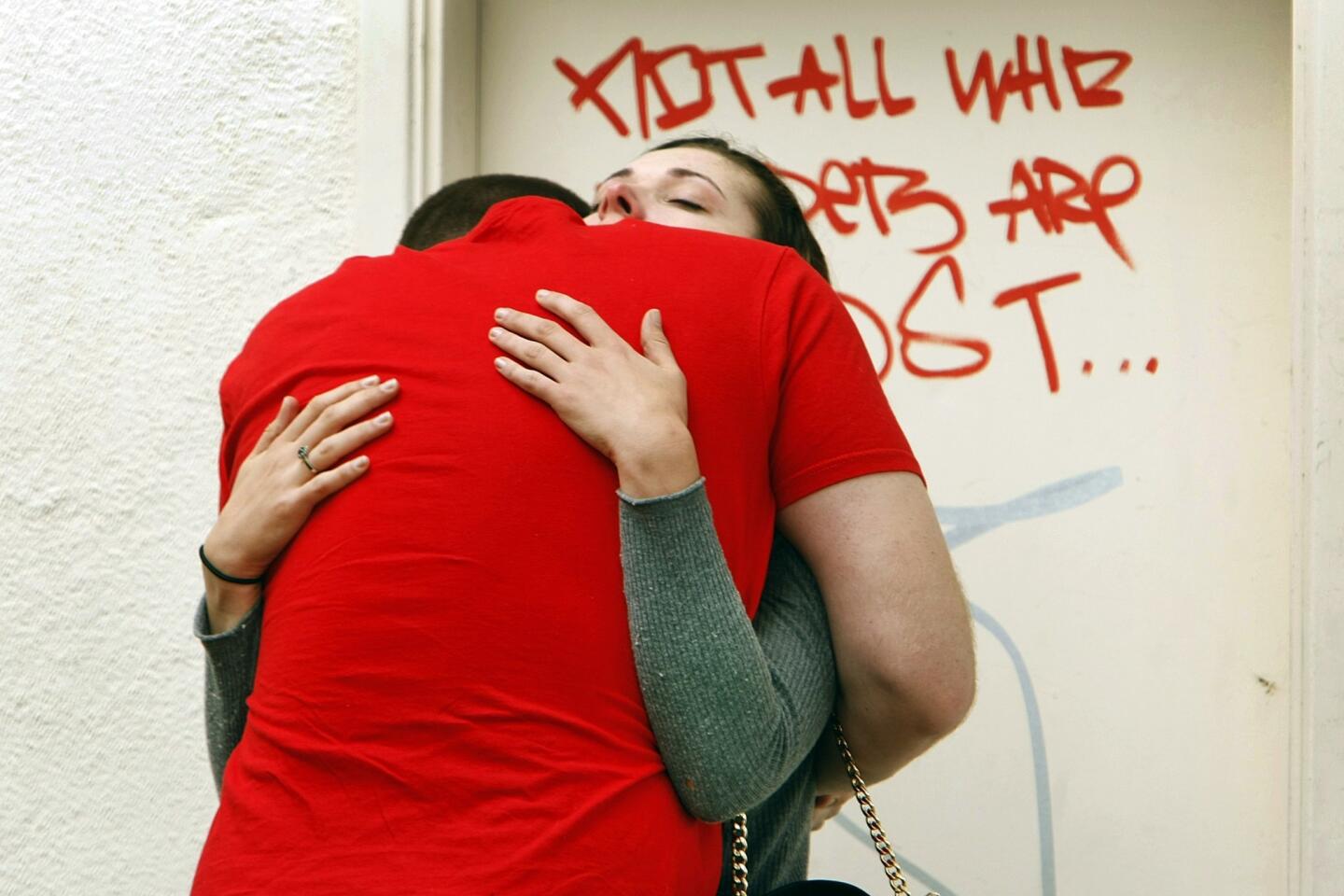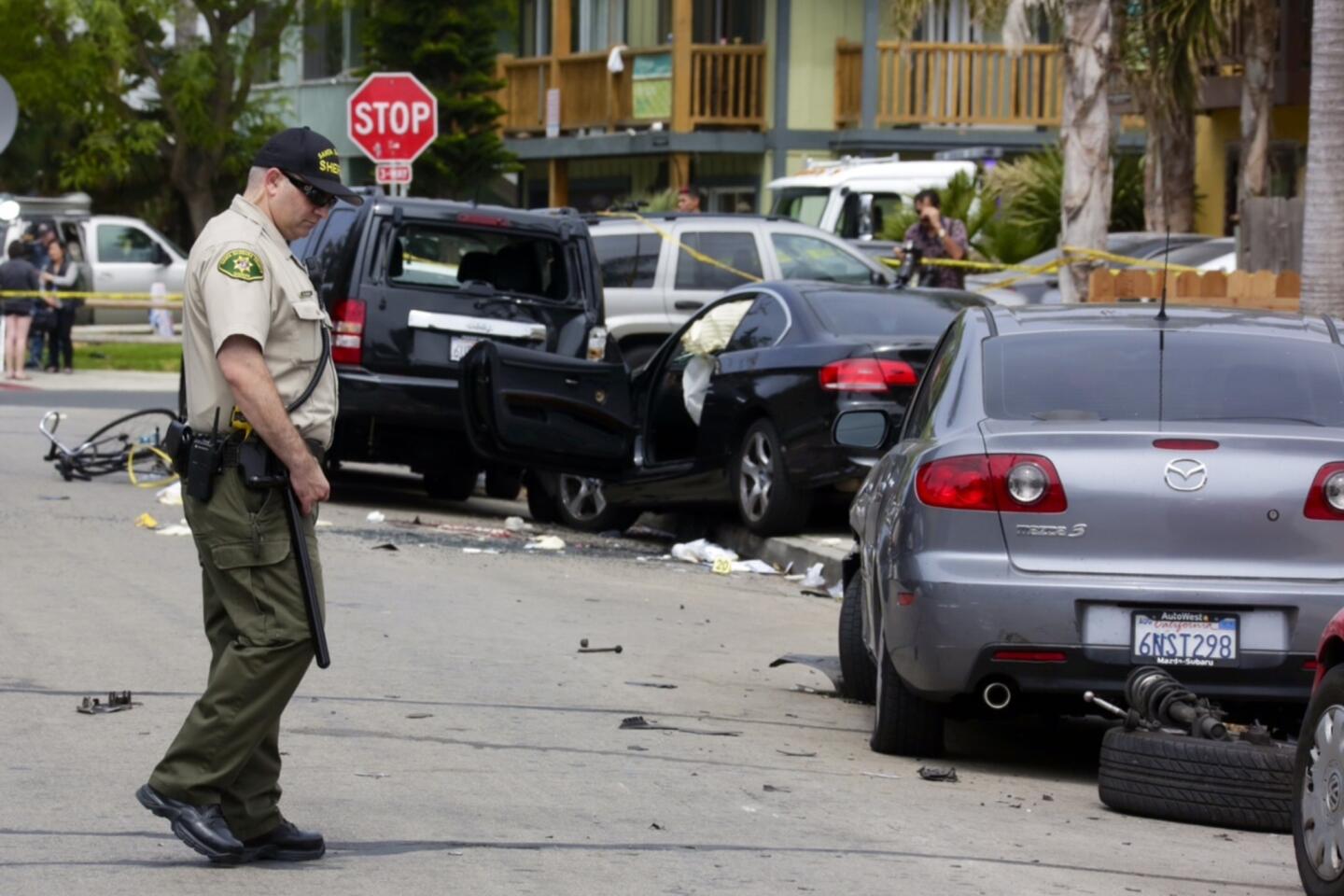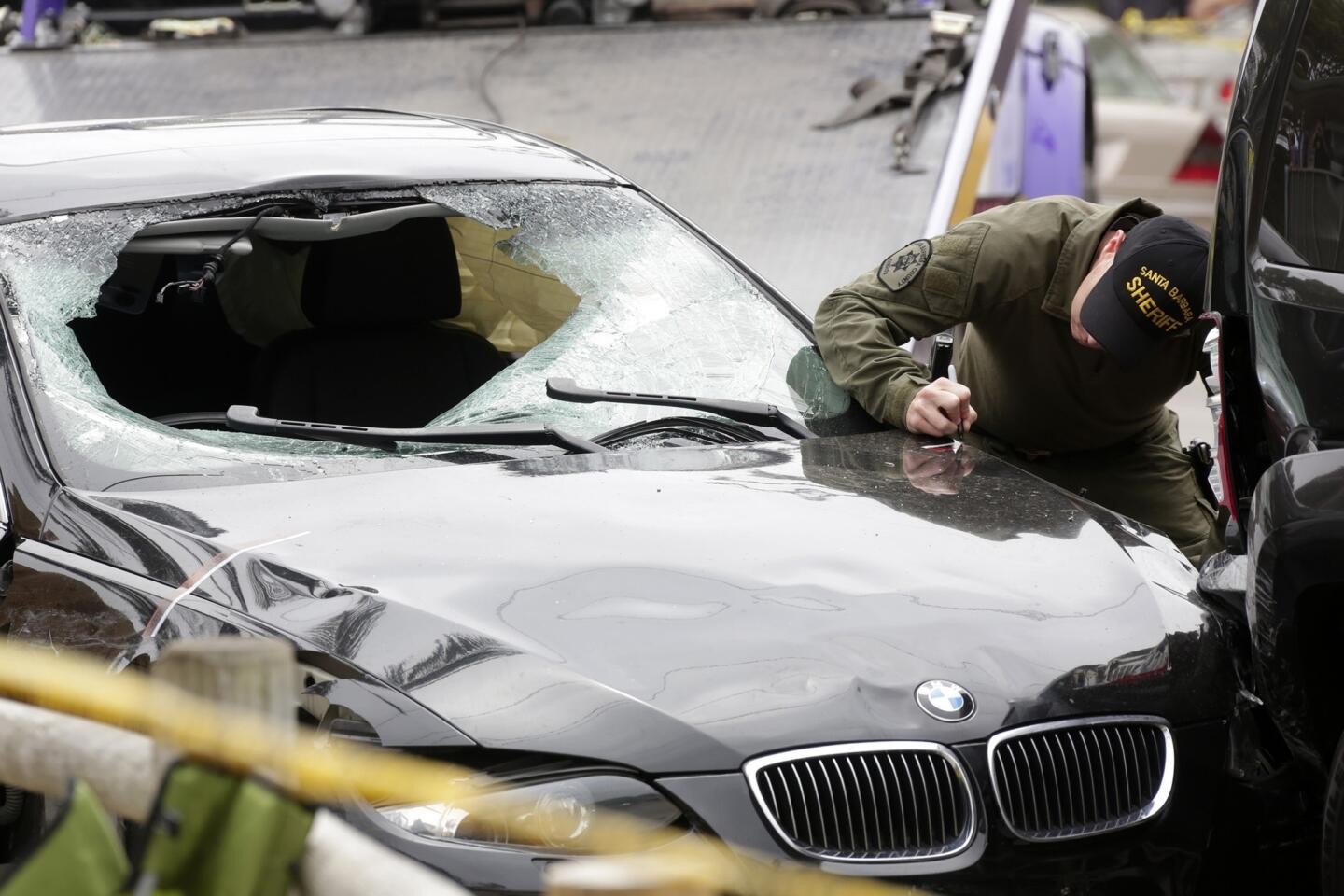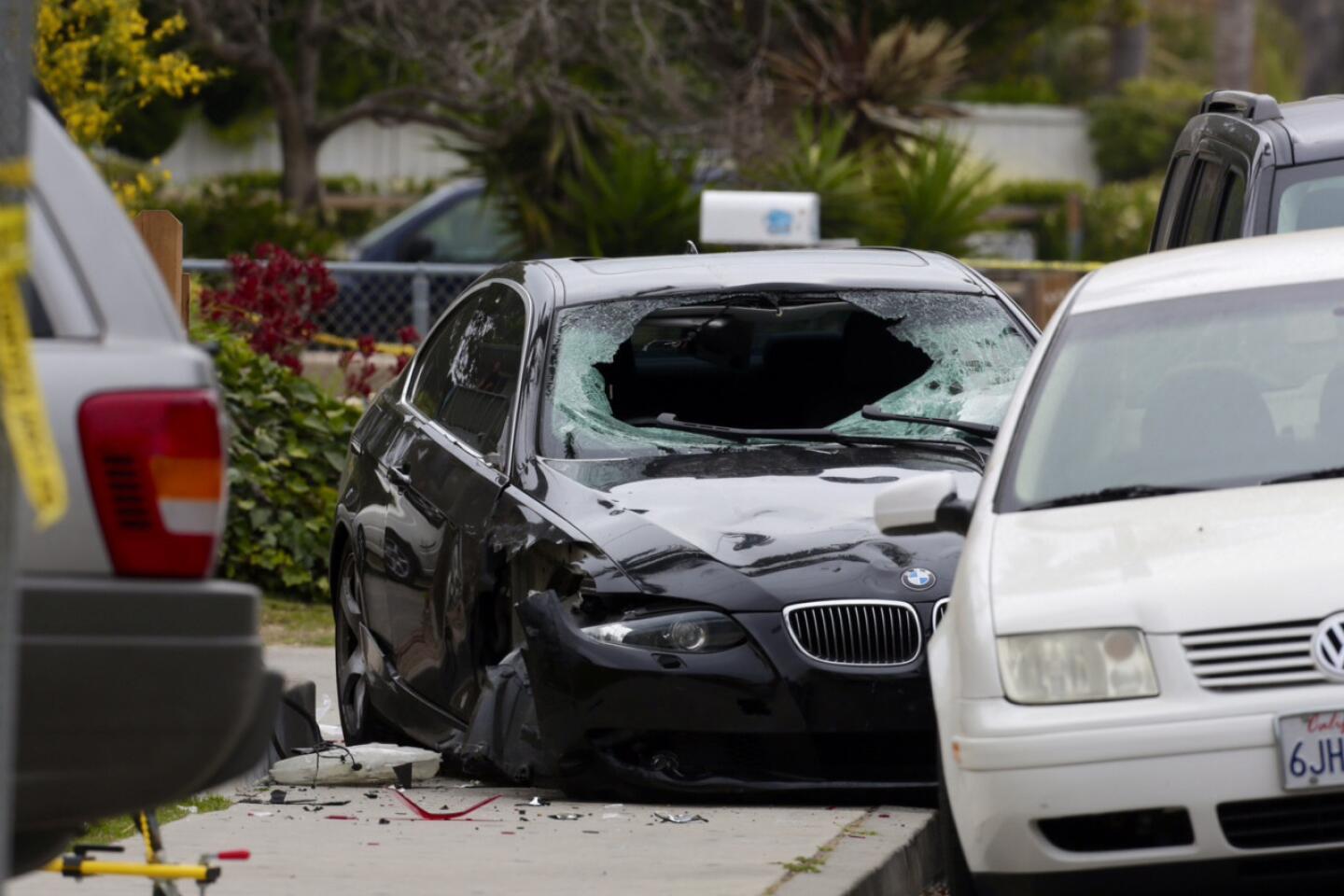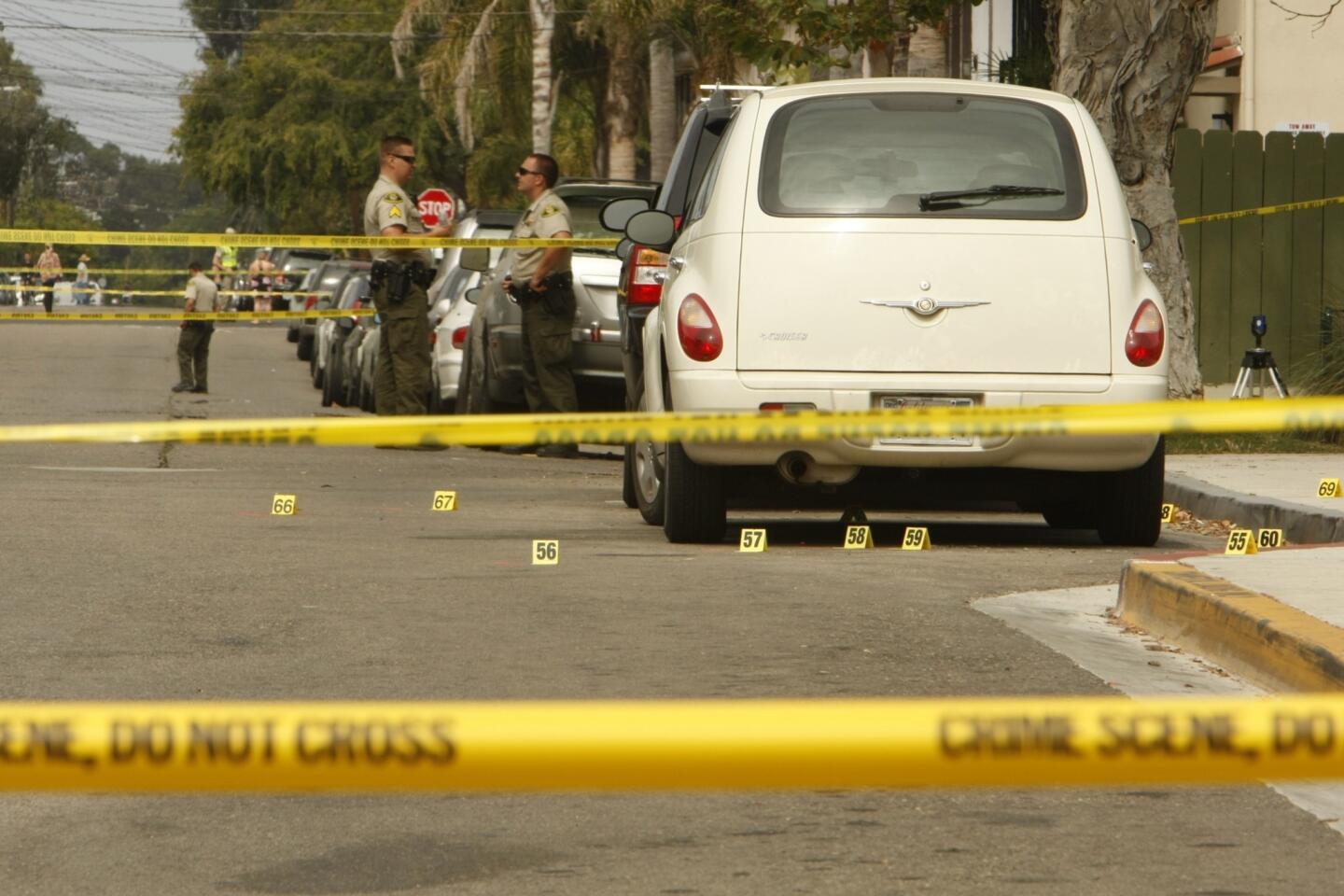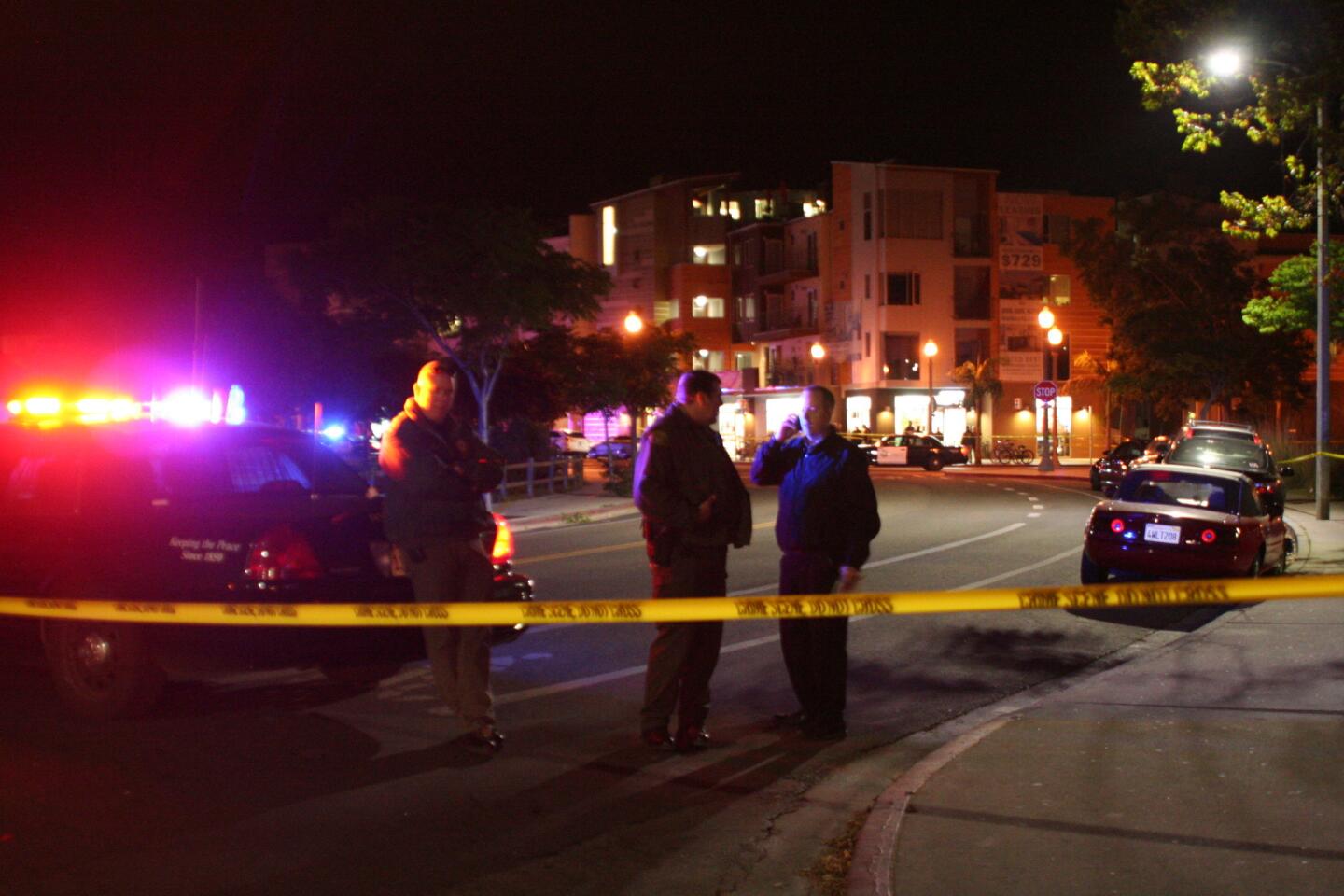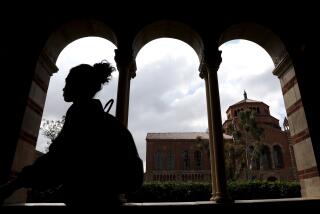Deputies didn’t view Elliot Rodger’s videos in welfare check
- Share via
REPORTING FROM ISLA VISTA, CALIF. — Sheriff’s deputies who conducted a welfare check on Elliot Rodger less than a month before his deadly rampage in Isla Vista knew of “disturbing” videos Rodger posted online but did not watch them, officials said.
Santa Barbara County sheriff’s officials released new details Thursday about the April 30 welfare check, which is part of the investigation into the May 23 attack that left six UC Santa Barbara students dead and 13 other people injured.
Four deputies, a UC Santa Barbara police officer and a dispatcher in training went to Rodger’s apartment on the night of April 30 for the welfare check, officials said Thursday.
The visit occurred after a person who identified himself as a friend of Rodger called a county mental health staff member. Based on that call and information from Rodger’s mother, sheriff’s officials said, the staffer requested the welfare check.
Sheriff’s officials did not detail what information the deputies had when they made the visit. But a Rodger family friend told The Times that his mother had contacted his therapist in April, concerned over bizarre videos her son had posted on YouTube. The family friend said the therapist contacted a mental health service, who referred the matter to police.
The Sheriff’s Office did not detail the content of the videos, describing them only as “disturbing.” It’s unclear whether the videos posted back in April included some of the recordings Rodger posted on YouTube on the day of the rampage. The family friend said the videos Rodger’s mother saw in April were less menacing than the now-infamous video he posted May 23 in which he threatens violence.
Typically, only two deputies respond to welfare checks, sheriff’s officials said. But the group who went to Rodger’s Seville Road apartment included deputies who were “familiar with Rodger” from a January incident, when he accused his roommate of stealing $22 worth of candles.
When the group spoke to the 22-year-old outside his apartment, the department said, he was “shy, timid and polite.”
“When questioned by the deputies about reported disturbing videos he had posted online, Rodger told them he was having trouble fitting in socially in Isla Vista and the videos were merely a way of expressing himself,” the statement said.
“Based upon the information available to them at the time,” the statement continued, “sheriff’s deputies concluded that Rodger was not an immediate threat to himself or others, and that they did not have cause to place him on an involuntary mental health hold, or to enter and search his residence. Therefore, they did not view the videos or conduct a weapons check on Rodger.”
One of the deputies called Rodger’s mother and, after briefing her on the interaction, passed the phone to Rodger, officials said. Rodger “told her he was fine and that he would call her later.” Deputies gave Rodger contact information about local services he could use “if he needed help,” and left.
The interaction lasted about 10 minutes, officials said.
Sheriff’s officials have remained tight-lipped about the rampage, calling it “one of the most complex investigations” in the department’s history. But they said Thursday that based on the information reviewed so far, “the deputies who responded handled the call in a professional manner consistent with state law and department policy.”
Rodger wrote of the April 30 interaction in a 137-page document in which he outlined what he called his “Day of Retribution,” saying he had three semiautomatic weapons hidden in his bedroom at the time and had written up plans for the assault.
“I tactfully told them that it was all a misunderstanding, and they finally left. If they had demanded to search my room ... that would have ended everything,” he wrote. “For a few horrible seconds I thought it was all over. When they left, the biggest wave of relief swept over me.”
Rodger wrote that he immediately took most of the videos off YouTube, but planned to restore them before his attack.
Some law enforcement and mental health experts questioned why officials didn’t review the video during the April 30 check.
“If somebody was concerned about them enough to report them it would seem to me to be part of the checkup,” said Ann Eldridge, vice president of the local chapter of the National Alliance on Mental Illness.
Although seeing the videos might not have changed the outcome, it would have been part of a thorough investigation, said Rick Wall, a former Los Angeles police captain who oversaw that department’s mental health team.
Authorities say that Rodger fatally stabbed three men — Cheng Yuan “James” Hong, 20, George Chen, 19, and Weihan “David” Wang, 20, all students at UC Santa Barbara —- inside his apartment before driving his BMW down the streets of Isla Vista on May 23, , firing out the window and veering his car toward pedestrians. Three other UC Santa Barbara students were killed: Katherine Cooper, 22; Veronika Weiss, 19; and Christopher Michaels-Martinez, 20. Authorities say Rodger took his own life.
More to Read
Sign up for Essential California
The most important California stories and recommendations in your inbox every morning.
You may occasionally receive promotional content from the Los Angeles Times.
